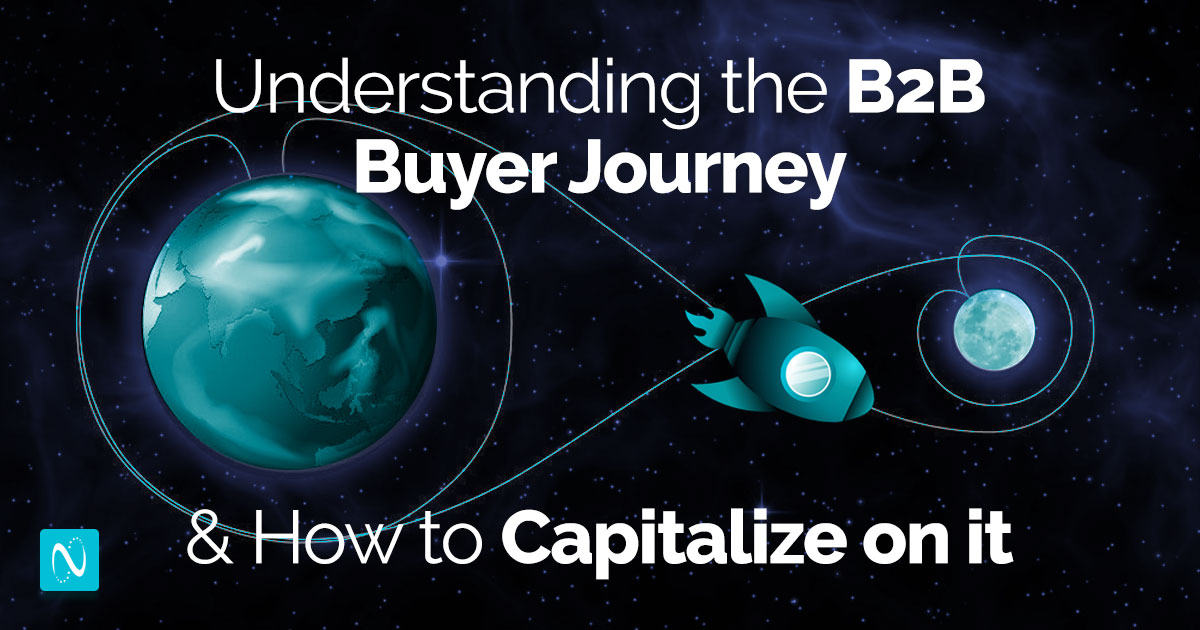Unless you’re Beth Harmon from The Queen’s Gambit, navigating the B2B buyer journey can feel like you’re playing a multi-level chess game.
With an average of between six to ten decision-makers in each account according to Gartner, each with their unique goals and interests, it’s no small feat to align all the pieces.
And it’s not just us saying that—a whopping 75% of customers in the same Gartner survey attest to the complexity of the purchase process.
However, in this post, we’re here to guide you through this maze and help make sense of the time and relationships it takes to secure that satisfying ‘Purchase Approved’ notification.
What is the B2B buyer journey?
A B2B buyer journey begins when a business realizes that they have a problem and continues until the point when they make a purchase.
It is our goal as marketers to provide our customers with the right resources at the right time to help make their journey easy and fruitful. We make this happen by understanding the stages of the B2B buyer journey and learning what our customers need at each stage.
Understanding the B2B buyers’ journey stages
You might think that a B2B customer might not be as emotionally invested as a B2C customer, but research suggests otherwise.
According to CMO.com, B2B customers are significantly more emotionally connected to their vendors and service providers than consumers.
For this purpose, it is important to map out your buyer’s journey that someone goes through when they’re making a decision to purchase.
It is important to note that the journey is not always linear and the buyer may move to and fro between two stages.
Let’s read about the seven stages of B2B buyers with examples and the type of content creation or support that happens at each stage.
Stage 1: Awareness
Photo by Kai Gradert on Unsplash
At the awareness stage, the customer is either becoming aware of their problem or they’re becoming aware of your company and the fact that your company offers a product that can be the solution to an existing or future problem.
In a marketing sales funnel, the awareness begins at the top of the funnel (TOFU). This is the stage where marketers can actually be the people who make them aware of their problem by creating resources to drive awareness in their customers.
For instance, an awareness campaign may include creating blog posts, social media content, white papers, ebooks, reports, guides, infographics, checklists, and PPC ads. The purpose of content creation at this stage is to raise awareness about a problem and tie the pain point to an undesirable outcome.
Stage 2: Interest
Like the classic AIDA model (Attention, Interest, Desire, and Action), in the interest stage of the B2B buyer’s journey, the customer explores their options after becoming aware of the pain point. They assess the complexity of their problem and evaluate whether investing in a solution is necessary given the stakes involved.
During the interest phase of the buyer journey, the primary goal is to engage and educate potential customers. Content creation at this stage should aim to capture their attention, establish credibility, and provide valuable information that addresses their pain points or challenges.
Some examples of content that can be created during the interest phase include thought leadership articles, educational videos, tutorials, webinars, podcasts, case studies, whitepapers, comparison guides, infographics, and eBooks that offer valuable research findings and actionable recommendations.
Stage 3: Consideration
The consideration stage in the buyer journey is a critical phase where potential customers have identified their needs or pain points and are now actively evaluating different solutions.
During this stage, they compare various alternatives, assessing their features, benefits, and costs, and determining which option aligns best with their requirements.
The consideration stage is characterized by the following aspects:
- Research and evaluation
- Comparison and decision-making
- Seeking validation and social proof
- Interactions with sales and service teams
At the consideration stage of the B2B buyer journey, it is important to create content that helps potential customers evaluate and compare different solutions. The goal of content creation at this stage is to showcase the unique value proposition of your offering and address specific pain points or challenges your target audience may have.
This is your cue to meet the customer where they are in their journey and provide them compelling arguments to choose them vs. any other option.
This includes providing in-depth product/service information, case studies, comparison guides, demos, and expert guides. Among all these, social proof in the form of written and video testimonials, reviews, and endorsements by industry leaders play an important part in shaping customers’ decisions.
Stage 4: Intent
The intent stage is where a prospect has shown a clear intention to make a purchase.
For a marketer, the goal at this stage is to help the prospect solidify their intent to move forward with your offer and provide the necessary information and confidence to take the next step in the buying process, whether it’s making a purchase, requesting a proposal, or engaging in further discussions with your sales team.
At the intent stage, it is crucial to provide content and resources that facilitate the decision-making process and reinforce the value and benefits of your product or service. This may include personalized product demonstrations, free trials, pricing information, testimonials from satisfied customers, and persuasive content that addresses any remaining concerns or objections.
Stage 5: Evaluation
During the evaluation stage, the potential buyer evaluates and compares the available choices. They consider things like features, price, reputation, customer reviews, and how well the options meet their specific needs. The customer might be leaning toward one option at this stage, but they need enough data to justify their purchase.
Ideally, the buyer journey should become more personalized—as Entrepreneur tells us to stop selling like it’s the 90’s.
At the evaluation stage, it is the marketer’s job to create and provide content that supports the buyer’s decision in their favor. The kind of content that is relevant at this stage includes email drip nurture campaigns, product comparison guides, case studies, expert reviews, and any content that can establish the credibility of your offering.
Additionally, providing pricing information, payment plans, implementation guides, and demos can help buyers assess the feasibility and suitability of your solution for their specific needs.
Stage 6: Purchase
We’re at the purchase stage. This is when the customer decides to go ahead with a specific solution or vendor and completes the transaction.
During this stage, the buyer may negotiate terms, sign contracts, and make the payment.
It’s important for businesses to make the purchasing process easy and smooth by providing ongoing support, easy documentation, and minimal back-and-forths.
Stage 7: Customer Retention
After a customer makes a purchase in the B2B buyer journey, we enter the post-purchase/customer retention stage.
This is when the company focuses on keeping the customer happy and engaged to encourage future business. They want to build a long-term relationship and ensure customer satisfaction.
During this stage, content that is shared aims to provide additional value and support to the customer. This may include tutorials, guides, case studies, and tips on how to make the most out of the product or service.
You may also send personalized emails or newsletters to keep the customer informed about updates, new features, or exclusive offers.
How do I create a B2B buyer journey?
Photo by Jean-Frederic Fortier on Unsplash
By mapping out a buyer’s journey based on the following steps, we’ll satisfy all of the above needs as they move through the funnel.
Identify your ideal client profile (ICP)
When it comes to creating a successful B2B buyer journey, it’s important to start by identifying your target customers. These are the people who are most likely to be interested in your products or services.
Here are some best practices to help you find and understand your ideal customers.
- Research your industry – Learn about the industry you operate in and gather information about its key players, trends, and challenges. This will help you identify the types of businesses or professionals that are most likely to benefit from what you offer.
- Define your buyer personas – Create a profile of your ideal customer, known as a buyer persona. Consider factors such as their job title, company size, industry, goals, pain points, and challenges. This will help you understand their needs and tailor your marketing efforts to address them.
- Analyze your existing customers – Look at your current customer base and conduct surveys and interviews to identify common characteristics among them. Consider factors like company size, location, and industries they belong to. This information can give you insights into the types of customers who are already interested in your products or services.
- Understand what they’re already consuming – NetLine’s Audience Explorer tool is one of the best free tools on the market. Interested in what your ideal B2B audience(s) is/are consuming? Audience Explorer gives you a rolling 180-day view into the topics they’re consuming and, most importantly, gives you insight into precisely who is engaged.
- Conduct market research – Survey your target audience or interview existing customers to gather valuable insights. Ask questions about their preferences, needs, and challenges. This information will help you refine your buyer persona and create targeted marketing messages.
- Monitor social media and online communities – Pay attention to discussions happening on social media platforms and industry-specific forums. Look for common questions, problems, or interests shared by your target audience. This will give you a better understanding of their pain points and the solutions they are seeking.
- Use analytics tools – Leverage data analytics tools to gather information about website visitors, such as their demographics, behavior, and interests. This data can provide valuable insights into your target audience’s online activities and help you refine your marketing strategies.
- Seek feedback from sales and customer service teams – Your sales and customer service teams interact directly with customers. They can provide valuable feedback on the types of customers they engage with most and the challenges those customers face. Regularly communicate with these teams to gather insights and refine your buyer persona.
Understand your customers’ goals, pain points, and challenges
Here are some simple ways to understand customer goals and pain points:
- Conduct customer interviews – Talk to your customers and ask them about their goals and challenges. Their answers will give you important information about how you can help them.
- Mine reviews – Look at what customers say in their reviews. They often talk about their goals and the problems they want to solve. This can give you ideas on how to make your products or services better.
- Monitor social media and forums – Pay attention to what people say on social media and in online business groups. People ask specific questions online. This can give you insights into what your customers need.
- Go to events – Attend events where you can meet current and potential customers. Talk to them and learn about their goals and challenges. This can help you understand what they need.
Create content that addresses each stage of the buyer journey
Photo by Hal Gatewood on Unsplash
Unlike the B2C customer journey, the B2B buying process is often complex, extensive, and information-heavy, with numerous stakeholders involved in purchasing decisions.
As technology improves, B2B buyers now expect B2C-like customer experiences online as well. In fact, 80% of business buyers expect real-time communications.
This means B2B companies have to continue innovating in order to stay one step ahead. As marketers, it is our job to meet the customer where they are.
One way to do this is by creating quality content that meets buyers where they are.
Build your distribution strategy to get in front of prospects
When you create content, you want to make sure that it reaches the right people. That’s where a content distribution strategy comes in. It’s a plan for getting your content in front of your target audience.
Here are some simple steps to help you distribute your content effectively and reach more leads.
- Use social media – Customize your message for each platform and engage with people who comment or share your content.
- Send emails – Send newsletters or targeted emails to people who are interested in your content.
- Collaborate with B2B influencers – Work together with people who have many followers or are experts in your industry. They can help promote your content to a larger audience and attract more leads.
- Syndicate your content – Publish your content on websites like Medium or LinkedIn Pulse, which can reach new readers and expand your audience. Syndicating eBooks, White Papers, and Webinars is another wise method of getting in front of your ICP. Suffice it to say, we’re pretty big fans of content syndication on our end, as well.
- Participate in online and IRL communities – Share your knowledge and provide helpful resources to gain visibility and connect with potential leads.
- Host webinars and podcasts – Organize online presentations or appear as a guest on podcasts to share your expertise. This way, you can reach engaged audiences and attract leads who are interested in your content.
- Leverage paid ads – From Google and Meta to TikTok, this can help you reach more people who are likely to be interested in what you have to offer.
Align your sales and marketing efforts
Aligning sales and marketing efforts is crucial in ensuring a smooth and effective B2B buyer journey, particularly if you are following an Account-Based-Marketing playbook (ABM).
At the bare minimum, this means:
- Ensuring open lines of communication – This starts by creating a shared understanding of goals, strategies, and target customers. This helps identify areas for improvement, share success stories, and address any challenges or gaps in the buyer journey. By maintaining an ongoing dialogue, you can refine strategies and optimize the buyer journey over time.
- Define what a lead looks like and key handoffs between sales and marketing – Develop lead scoring criteria that both sales and marketing agree upon. This helps prioritize leads based on their level of engagement, fit with the ideal customer profile, and readiness to purchase.
Test and optimize your process
Testing and optimizing your process is an ongoing task. It’s about continuously learning and adapting to make the B2B buyer journey more effective and successful.
Practically, this means making changes based on feedback.
Why knowing the buyer journey for B2B is so important?
Understanding how to map it and take action on gaps can be the difference between a customer signing on and a potential buyer looking for an alternative partner.
Let’s look at some benefits of understanding the buyer’s journey:
Understand your customers better
By understanding the buyer journey, businesses can get to know their customers better. They can learn about their needs, preferences, and challenges. This helps in creating products and services that truly meet customer requirements.
Improve your marketing strategy
When businesses understand the buyer journey, they can create marketing strategies that are targeted and effective. They can reach the right audience with the right message at the right time, increasing the likelihood of a sale.
Provide a better customer experience
Understanding the buyer journey allows businesses to provide a better experience for their customers. They can tailor their interactions, provide relevant information, and address customer pain points. This leads to happier customers and long-term relationships.
Increase sales
With a clear understanding of the buyer journey, businesses can optimize their sales process. They can identify key touchpoints and opportunities to engage with customers. This can lead to more conversions and increased sales.
What does the future look like for the B2B buying journey?
With B2B buyers relying on more channels, the future of B2B sales is hybrid.
Here are some trends to pay attention to:
- Create more personalized sales experience – Businesses will use advanced technologies to understand customer preferences and deliver tailored experiences throughout the buying process.
- Rely on data-driven decisions – From identifying trends to forecasting pipelines and optimizing sales and marketing strategies, data will play a crucial role.
- Omnichannel engagement -Businesses need to provide a seamless experience across different touchpoints and channels.
- The rise of AI and automation – Automation and artificial intelligence (AI) will further revolutionize the B2B buying journey from lead generation to personalized content and personalized recommendations.
How NetLine helps to map a buyer’s journey in B2B
INTENTIVE is the go-to buyer-level intent platform designed to help you understand prospects and deliver personalized content at the right time.
Our platform gives you real-time insights that go beyond the basics. It doesn’t just tell you “who” is showing interest in an account, it reveals “what” actions they’re taking, “when” they’re taking them, and uniquely, “where” these actions are happening. This intelligence empowers you to truly understand your prospects, paving the way for successful and meaningful content personalization efforts. Start a free trial today.



